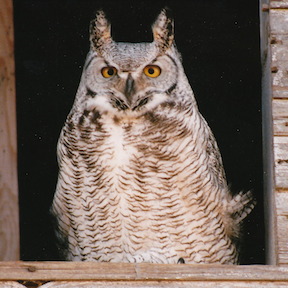
The Owl and I had a question sent to us recently that we are happy to answer here in our grammar and word use feature, A Word with Beth.
I’ve heard you should have a space before and after an ellipsis. I have seen in books sometimes there is a space before the ellipsis and sometimes there isn’t. Is there a hard and fast rule on this? … And should there be a space between the dots? . . .
Ellipses are a pain in the mm-hmmm! (Ellipses is the plural of ellipsis, which I’m sure you already know.) They’re particularly confusing when, as the questioner said, they’re done differently in different books. Likely that’s because of the style guide that the publisher follows. There may be discrepancies in the way the “rules” are interpreted from style guide to style guide.
The basic rule is that there should be a space before and a space after, and yes, the standard is to have a space between each one. Handily, Microsoft Word automatically adds the narrow space between dots that’s all that is necessary, when one types the … so there’s no need when typing in Word to type . . . (dot space dot space dot space). Apple’s Pages does the same.
As for the space before and after the three dots, that’s standard, but just to confuse things, it does vary in some books. When in doubt, follow the standard. Grammar Girl (a resource I love, because she explains things in ordinary language) suggests thinking of the ellipsis as the word or words it’s replacing. Then a space before and after it makes perfect sense. Here’s Grammar Girl’s take on creating ellipses.
Also, they’re always three dots, not two, not five, not many dots trailing off ad infinitum. Occasionally, you might see four dots at the end of a sentence, but that’s because the part of the quotation that is being omitted has a full sentence before the omitted part. So the fourth dot is really the period after the sentence preceding the ellipsis.
One caveat about ellipses — they’re far too widely used. Their chief use is to indicate that something (a word, a number of words, a number of sentences) has been omitted from a quotation. They can also be used to indicate the trailing off of a spoken sentence or thought, but this shouldn’t be overused.
That’s a basic take on ellipses. Feeling slightly dotty? 😉
Remember: if you have a question about a sticky grammar point, or the use of a word or phrase, the Grammar Owl and I would be glad to answer it in a future edition of A Word with Beth. You can ask your question in the comments below, or contact me using the email address of my copy editing service, mail (at) flubs2fixes (dot) com. (Do the logical thing with the words in brackets.) The Owl and I look forward to hearing from you!

GAH! *gulp* My thoughts frequently fade into oblivion, so ellipses are my favorite punctuation in the world. I may occasionally (consistently) overuse them … That’s just how I roll … See what I mean …? That space thing is news to me, but the way you explain it, it makes sense. Maybe …
Love and licks,
Cupcake
Those three dots are so tempting! Almost as much so as naps in the street, right, Cupcake? 😉 Genevieve, I think we use them out of habit, and so many people do the same, that it starts to seem the thing to do. In formal writing, it’s best to use them sparingly. Think of them as salt. A little goes a long way! (I have to tell myself that, too.)
I generally (now I realize incorrectly) use them (when in quotes) as: “I had realized that I…had it all wrong about ellipses.” Thank you for clearing it up! 😀
You’re welcome, Erik! Glad to be of assistance!
I wasn’t aware of the space before and after rule! Thank you. I use them in speech mainly.
My name is Penny and I’m an ellipses over-user . . . I freely admit it 🙂
Thanks for the informative post, Beth.
Gulp! I’m an over-user too. Didn’t realise about the space before and after either. Thanks for this.